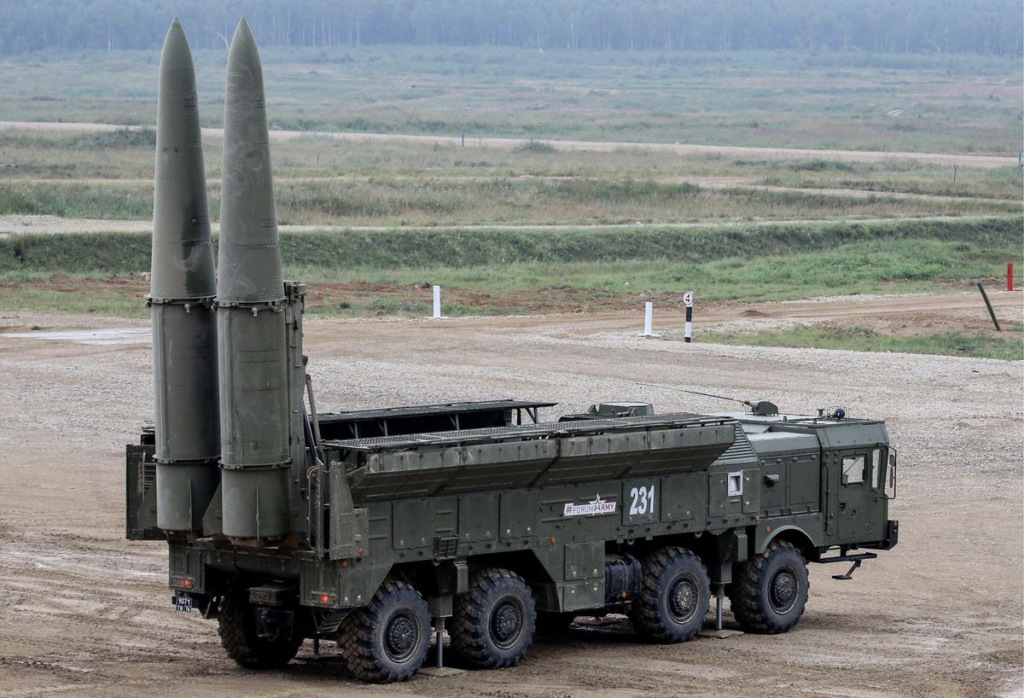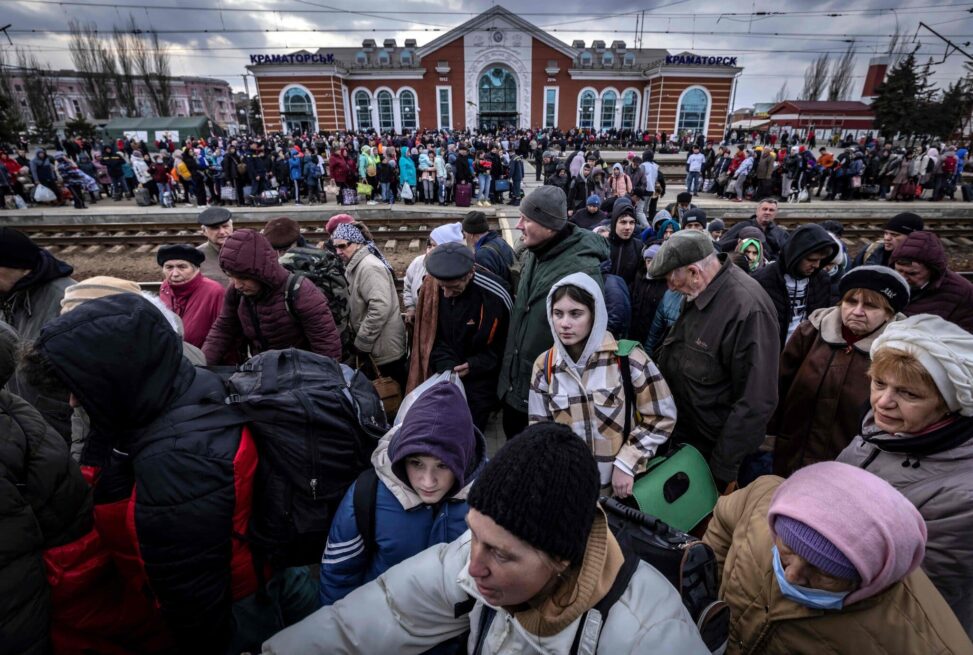It appears there was a false flag attack by Ukrainian forces on their own people at the railway station in Kramatorsk. While a BBC report shows quite clearly that the missile was a Tochka used only by the Ukrainian side a BBC television report said the missile used “was of a type used by the Russians” – the exact opposite of the truth, as their own image showed.
Even President Zelensky confirmed it was a Tochka missile which hit the Kramatorsk railway station killing some 50 people waiting to be evacuated. This BBC report confirms with this image in their report that this was the missile:

It is quite clear that it is NOT a Russian used Iskander missile – pictured below. Note the Russian used missile has no fins on the bottom end.

The Russian military said that it had pinpointed the location from which the missile had allegedly been launched. According to defence officials, it came from the town of Dobropole, which is located southwest of Kramatorsk and has been under the control of Ukrainian forces. The Russian forces have almost total control of the airspace and have tracked missiles and ground forces during this war so this tracking report is credible.
The attack on Kramatorsk also closely resembles another missile strike that killed 17 people in the city of Donetsk in mid-March.
The Russian Ministry of Defence said that the Tochka U missile, is a weapon system that “only Ukrainian forces use.”
The local Donetsk militia, which consider Kramatorsk as part of the Donetsk People’s Republic, claimed the missile was a Tochka U of the Ukrainian forces. Its leadership said Ukraine has a long record of deploying the weapon system that neither Russia nor the DPR forces use.
The following numbered Tochka missiles were used on Donetsk and Luhansk by Ukrainian forces in February and now again in April:
SH91565 strike on Alchevsk LNR, 2nd Feb. 2015
SH91566 -ii- Logvinovo DNR 13th Feb 2015
SH91579 -ii- Kramatorsk railway station 8th April 2022
Never has there been a more blatant “virtual” war for propaganda purposes. 7 examples of fake news are given in this link, including the use of images from video games and a Starwars film!
Recently we have had American Governmental and press admitting using totally unverified incidents as propaganda. They refer to them as “narratives”.
According to an NBC News article, “multiple US officials acknowledged that the US has used information as a weapon even when confidence in the accuracy of the information wasn’t high. Sometimes it has used low-confidence intelligence for deterrent effect…”. No wonder only 7% of Americans have a high degree of confidence in their mass media.
As Harley Schlanger quotes in this video the “Russia going to use chemical weapons” “China weapons to Russia”, and “Russia lied to by advisers to cover up losses” claims were all totally without foundation but were deliberately used as propaganda weapons to win “the media war”.
There have been no wars from which either side has escaped accusations of “war crimes”. The Allies fought a just war against Nazi Germany and fascist Europe between 1939 and 1945 but many accused them of war crimes for disproportionately bombing cities. All soldiers are in danger of vicious responses in the heat of battle but there is a difference between that and conscious cruelty, targeting civilians, torturing or killing prisoners, using civilians as human shields and of course setting up false flag attacks on your own side to pretend the enemy was responsible. All these seem to be features of at least the Ukrainian side of this conflict.
The trouble with efficient lies and propaganda is that they whip up fanatical hatred and cause war crimes. They also give the Ukrainians in this case the false belief that they are “winning the war” and instead of coming to terms at the peace conferences, commit themselves to more bloodshed. There is no more sickening sight as the slaughter continues than Boris Johnson telling President Zelensky not to compromise with Russia. There is nothing more dangerous than believing your own propaganda and applying to the real war the dangerous myths of the virtual propaganda war.
Source: Freenations
Photo: Kramatorsk station three days before the attack.
